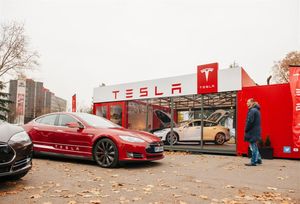
SPONSORED CONTENT -- (StatePoint) Countless headlines suggest you have to drive a battery-powered electric vehicle (EV) if you care about the planet. Yet consumers, including many who want to be “green,” are still opting for gasoline-powered vehicles 98 percent of the time. What’s standing in their way?
--Cost. It may cost as much as $10,000 or $15,000 more up-front for a battery-electric car compared with a similar gas-powered car.
--Charging. Installing a home charger that’s required to run a EV can cost an additional $1,000 to $3,000. Additionally, a home charger may not be possible for those who park on the street or live in an apartment building.
--Road trips. The number of public charging spots is growing, but it’s not like the nationwide network of gas stations. Even with a relatively robust 200-mile range, EV owners must plan carefully for charging breaks every few hours of driving. It may take 30 to 60 minutes to add enough battery power for another couple hours of driving. Bigger battery packs can give longer range, but also longer charging times.
If any of these realities are the deal-breakers preventing you from going green behind the wheel -- relax! There are still at least four good alternatives to EVs that will still help the environment without breaking the bank.
Hybrids
Hybrid technology has been around since the late 1990s. Hybrids combine a smaller gas engine with battery-powered electric motors for better fuel economy. Hybrid sedans like the Toyota Camry, Honda Accord or Hyundai Sonata now average more than 50 miles per gallon. The Toyota Prius Eco gets 56 mpg in combined city-highway driving, according to fueleconomy.gov. A 50-mpg hybrid replacing a 30-mpg vehicle will save $625 a year in fuel costs, or $3,100 over five years. You’ll save even more if your trade-in gets less than 30 mpg!
Plug-in Hybrids
A plug-in hybrid is a hybrid you can plug-in to charge a separate battery and then drive for 30-50 miles on pure electric power. After that, a gasoline engine kicks in, operating like a hybrid. For commuting, a plug-in like a Toyota RAV4 Prime or Prius Prime is a great choice. The average U.S. commute is 16 miles. With just 32 miles of electric-only range, that commuter wouldn’t need gasoline to get to work.
Fuel-Cell Electric Vehicles
Fuel-cell electric vehicles (FCEVs) are electric vehicles powered by a reaction from hydrogen fuel and oxygen, making water vapor the only emission. The 2021 Toyota Mirai, for example, has a range of more than 400 miles, compared to 200-300 for most newer EVs. FCEVs are refilled at a station, like the gas stations you’re used to. The main challenge is a lack of hydrogen infrastructure. California is the only state with a robust network of fueling stations -- but more are on the way.
More Efficient Gasoline-Powered Cars
While not as dramatic in helping the environment as the other options mentioned, conventional gas engine cars still have a lot to offer. Automakers have been improving them continuously to meet tougher federal fuel economy regulations. Some gas-powered SUVs you see around town, like the 2021 Honda CR-V or the Toyota RAV4, might get 30 percent better mileage than the 10-year-old car or SUV they’re replacing. That would cost about $400 less per year to operate than their 2011 counterparts, or an extra $2,000 in your pocket after just five years!







